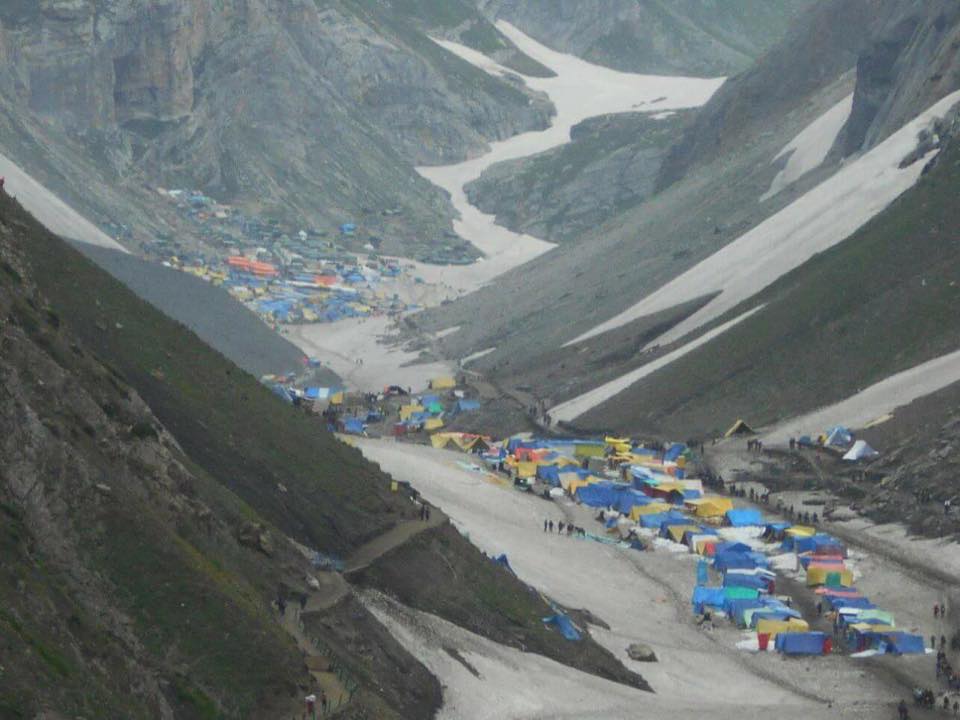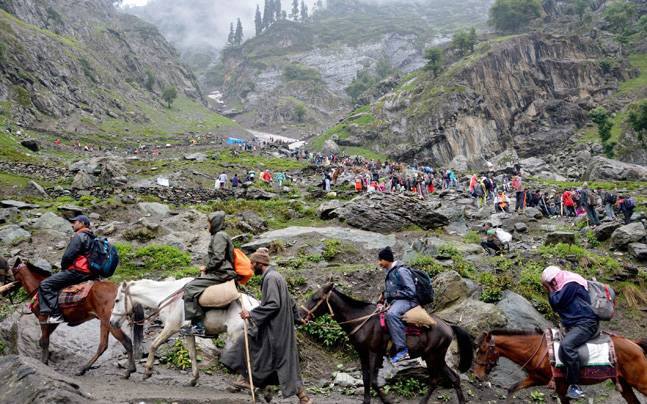Braving All Odds, This Doctor & His Team Treat 50 Yatris at Amarnath Each Day!
Each year as devotees trek up 3,880 metres high to reach the holy cave shrine of Amarnath and complete the 60-day annual pilgrimage, many reports of deaths and accidents emerge.


One look at the pictures of the Amaranth yatra will tell you how difficult the trek is. The climatic conditions are incredibly harsh making the trek even more challenging.
Each year as devotees trek up 3,880 metres high to reach the holy cave shrine of Amarnath and complete the 60-day annual pilgrimage, many reports of deaths and accidents emerge.
This year in an attempt to provide timely medical assistance to the devotees, more than 400 doctors and other health professionals have been trained for high-altitude medical emergencies by the Health Department.
Unfortunately, despite the training, a majority of the doctors found it difficult to get acclimatised to the weather conditions and developed hypothermia. Many of them also requested a transfer.
With most of the medical team returning, Dr Magray and his team of one pharmacist and a nursing attendant are holding the fort and treating all those in need of medical assistance. During the peak yatra days, Dr Magray and his team attend to almost 50 patients each day.
The Indian Express reports that according to the Amarnath Shrine board officials, seven people have died during the yatra so far this year due to different reasons. Thota Radhnam, 75, from Fiwalayam in Andhra Pradesh and Rasha Krishna Sastry died of suspected cardiac arrest at Baltal and the cave shrine, respectively. Pushkar Joshi died after a stone hit him between Brarimarg and Railpathri on Monday.
The publication further states that the oxygen levels routinely dip to dangerously low levels, and the people feel suffocated in their sleep.
“The patient feels like his lungs are collapsing. After the suffocation at night they have to open their tents for air circulation and suffer the cold wind,” Dr Magray said.

Photo Source
Equipped with 25 oxygen cylinders, one oxygen concentrator, which can produce oxygen, an oximetry machine to ascertain the oxygen saturation of a patient, and a hypo bag, used to revive a patient with severe case of breathlessness in 15 seconds—Dr Magray and his team are working against several odds to keep the yatris fine.
We, at The Better India, salute the team who is genuinely putting service before self.
(Edited by Gayatri Mishra)
Like this story? Or have something to share?
Write to us: [email protected]
Connect with us on Facebook and Twitter.
NEW: Click here to get positive news on WhatsApp!

Similar Story

‘This Was My Home, Now It’s Yours’: Kashmir Man Turns Ancestral Land into Charming Homestay
Aamir Khanyari took his ancestral land and turned it into My Kashmir Home, a beautiful homestay nestled amid Kashmir’s valleys, where you wake up to vast orchards, chirping birds, and traditional Kashmiri food.
Read more >
If you found our stories insightful, informative, or even just enjoyable, we invite you to consider making a voluntary payment to support the work we do at The Better India. Your contribution helps us continue producing quality content that educates, inspires, and drives positive change.
Choose one of the payment options below for your contribution-
By paying for the stories you value, you directly contribute to sustaining our efforts focused on making a difference in the world. Together, let's ensure that impactful stories continue to be told and shared, enriching lives and communities alike.
Thank you for your support. Here are some frequently asked questions you might find helpful to know why you are contributing?


This story made me
-
97
-
121
-
89
-
167












